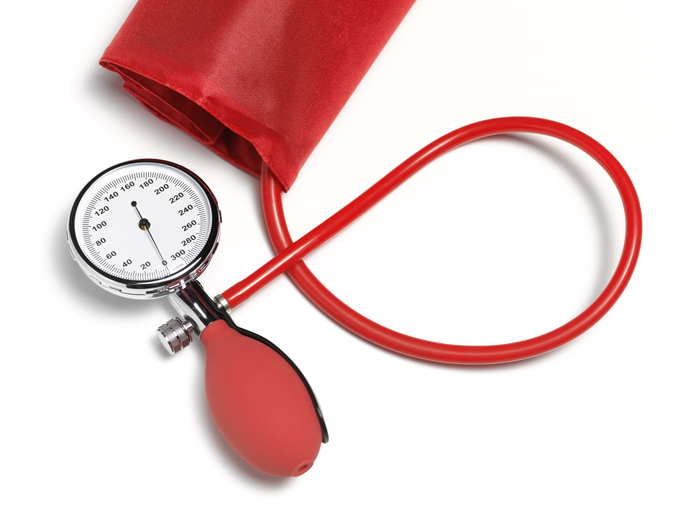Once Again, We See Why Monitoring Blood Pressure At Home Can Be Life-Saving

By Joy Stephenson-Laws, JD, Founder
Back in January, Lynette Hardaway, more popularly known as Diamond of the Trump-supporting sister duo Diamond and Silk, died of heart disease due to chronic high blood pressure. She was just 51-years-old.
“Hardaway, one of former President Donald Trump’s most ardent supporters, was found on the kitchen floor by her sister Rochelle ‘Silk’ Richardson after she collapsed crying out, ‘I can’t breathe,’” according to a report from the New York Post.
It really saddened me to see yet another young person die due to heart disease, which is the leading cause of death for both American men and women. According to the Centers for Disease Control and Prevention (CDC), nearly half of adults in the United States have high blood pressure (also called hypertension).
It is normal for blood pressure to rise and fall throughout the day, however, if it remains high for a long time it can damage the heart and increase the risk of heart attack or stroke. Hypertension often goes undetected for years and may not present signs or symptoms. But even without symptoms, high blood pressure can still damage the heart as well as the blood vessels and kidneys. According to the World Health Organization (WHO), more than 700 million people are living with untreated hypertension.
To give you even more perspective on how serious of an issue hypertension is, for the first time the United States Preventive Services Task Force is recommending all pregnant women be screened for hypertensive disorders of pregnancy by getting their blood pressure monitored throughout pregnancy, according to this report from CNN.

“High blood pressure usually has no symptoms. So the only way to find out if you have it is to get regular blood pressure checks from your healthcare provider. Your provider will use a gauge, a stethoscope or electronic sensor, and a blood pressure cuff. He or she will take two or more readings at separate appointments before making a diagnosis,” reports the National Institutes of Health (NIH).
This statement from the NIH is not entirely true. Although it is great to get screened for hypertension by your healthcare provider, you can actually be (and it is highly recommended) proactive and take matters into your own hands. Monitoring your blood pressure at home, which is widely accessible, can be life-saving.
Let’s briefly review what a healthy versus unhealthy blood pressure looks like in general. Blood pressure readings are expressed by two numbers. The first number, called systolic, is your blood pressure when your heart beats, and the second, called diastolic, is the pressure when your heart is at rest. So, when you hear that your blood pressure is, for example, 135 over 75, the 135 is your systolic pressure and the 75 is the diastolic. For many years, a systolic reading of 120 was accepted as the upper limit for the normal range. Anything higher indicated high blood pressure or hypertension, which increases your risk for cardiovascular diseases such as heart attack, stroke and heart failure. Read here about how women may need to be especially mindful.
You can view the American Heart Association’s standards here. The AHA recognizes five categories for blood pressure readings: normal, elevated, high blood pressure stage 1, high blood pressure stage 2, hypertensive crisis.
“Typically, more attention is given to systolic blood pressure (the first number) as a major risk factor for cardiovascular disease for people over 50. In most people, systolic blood pressure rises steadily with age due to the increasing stiffness of large arteries, long-term buildup of plaque and an increased incidence of cardiac and vascular disease,” AHA reports.

We can know where we stand on a daily basis through monitoring our blood pressure at home. You can read more about your options here, and you have the option of using a more basic device or if you are more tech savvy you can use a device that connects to smartphone apps.
Every person is different, but a good rule of thumb is to monitor at least twice a day (morning and evening). In the morning, measure before taking any medications. Also keep in mind that if you drink caffeine and then check your blood pressure, it will likely be more elevated than it usually is. If you are a slow caffeine metabolizer like myself, this is also something you need to be very aware of. If you are seeing that your blood pressure is high on a regular basis, speak with your healthcare provider as soon as possible.
Take a look at your lifestyle, determine what you need to improve.
There is so much you can do to maintain a healthy blood pressure such as exercise regularly, maintain a healthy weight, manage stress and follow a balanced, nutrient-dense diet (more on this below), but I think this pH Labs blog in particular really gets into the details of how you can truly be proactive and some key differences between men and women when it comes to maintaining a healthy blood pressure. I highly recommend giving this blog a really good read and taking the time to consider lifestyle changes you may need to make.
Also know that not getting enough sleep may significantly contribute to the development of hypertension.
It is also good to get a nutrition test to make sure you don’t have any imbalances or deficiencies that could contribute to making you hypertensive. Magnesium, calcium, vitamin C and potassium, for example, are very important for blood pressure control. You also may want to consider taking a probiotic since there is evidence that they may play a role in reducing hypertension. Also work to plan to reduce sugar, salt, unhealthy fats, excess calories and excess carbohydrates. Eat more unprocessed food and drink plenty of water (recommended: the number of your weight divided by two = ounces of water you should have every day).
Life is full of pressures, but we do not have to suffer with chronic high blood pressure.
Enjoy your healthy life!
Disclaimer: This article is not intended to provide medical advice. Please consult with your doctor or another competent healthcare practitioner to get specific medical advice for your situation.
The pH professional health care team includes recognized experts from a variety of health care and related disciplines, including physicians, attorneys, nutritionists, nurses, and certified fitness instructors. This team also includes the members of the pH Medical Advisory Board, which constantly monitors all pH programs, products, and services. To learn more about the pH Medical Advisory Board, click here.







